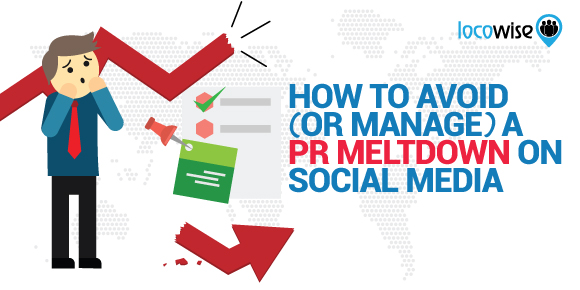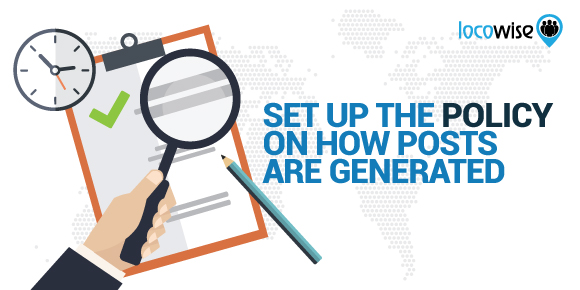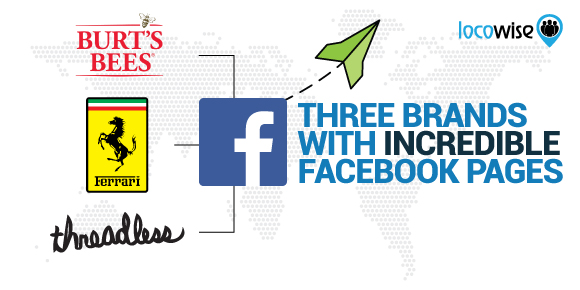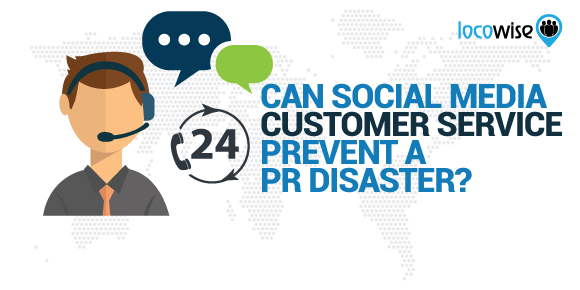How To Avoid (Or Manage) A PR Meltdown On Social Media
Sahail Ashraf posted on 1 September 2017
You’ve worked hard to get your client’s brand out there on social media, and to boost engagement for that brand.
But suddenly something awful happens. One of your social media accounts is updated by an employee, and it isn’t pretty. The post doesn’t fit in with the brand voice, which is bad enough, but the post is also completely inappropriate.
There is a problem. Now, the problem is about fighting fires, scrambling to make a statement online so your customers aren’t turned off your services.
Chances are, you’ve already got some incredibly tight and positive measures in place to prevent this kind of thing from happening. You know that any bad public relations incidents could lead to catastrophic outcomes.

It might be worthwhile looking at the measures we have outlined in this post. All of them should make it a lot easier for you and your client’s brand to stay out of trouble on social media.
Make your policy on posting crystal clear
There are an infinite number of scenarios to be concerned with here. The CEO who wants to tweet every day. The new member of staff who manages to get her hands on the Instagram account details. Or even someone in your digital agency who thinks they should be chiming in on the latest hashtag craze.
The key thing here is to be very careful. Any posting should always be done through a filter. If the client doesn’t agree with this then you will have to respect their wishes (but still offer a bit of guidance anyway). This filter has to be there to proof and edit where necessary. It also has to be there for another reason.
Whether you are a client or an agency, set up the policy on how posts are generated, and who generates them. This way you have control over the situation.

Each post will have to go through a proofing process simply because poor quality spelling and grammar can set the brand back and make it look unprofessional.
Also, it’s important to bear in mind that certain aspects of punctuation, such as the comma, can change the meaning of a sentence so that it is the opposite of what you want to say. This may sound trivial, but it makes a whole lot of difference.
How much, and how many
While social media can be fun, when brands are involved the stakes can be much higher. So ensure that the team (or whoever takes care of social around the brand) are clear on how the brand wants to present itself.
Your policy should be explicit on posting frequency. In the end, you or your client will know what kind of frequency is the most comfortable to work with. But a brand that posts more than any other brand is not going to get anywhere fast. The ‘sweet spot’ needs to be found and stuck to.
There are also issues around quality. Too much posting can lead to poorer quality posts, and that will not help the brand.

It’s best to get to grips with frequency as soon as possible, so that your policy can be clear. Just be aware that a brand that saturates a platform with content quickly will not be respected.
Acting quickly
If something does go wrong on social media and the brand is at stake, it helps to have a clear chain of events and responses in mind. Part of your disaster policy should focus on accountability and responsibility.
Who is to deal with a serious problem on social? How will it be dealt with (via a statement or the deletion of a post?) and so on. The more concrete the details here, the more likely a terrible event can be managed quickly and effectively.
Don’t forget that by acting quickly to try and make things right, the brand will be seen in a much more attractive light. A good brand should be able to deal with problems professionally. It should be totally accountable.
This is what people expect. Having a plan that identifies who deals with the worst, and how, makes everything much more efficient. It could also lead to the brand becoming even more popular.

Circle the wagons
Internal email is a modern wonder. You can use it to ensure that work gets done faster in the organisation. You can also use it to send lovely messages to fellow workers.
When United Airlines had a major PR disaster when it’s employees removed a perfectly well-behaved customer from a plane, the brand did not think carefully about managing the situation.
Someone in the company sent out an email to employees that did not treat the issue with perhaps the best level of sensitivity. That someone happened to be the CEO of the airline and the email he sent out was a PR disaster.
The brand you represent may not have to deal with the kind of problem UA had to, but it certainly pays to ensure that proper use of social media is set out in a brand policy. It’s wise to put together a special ‘escalation plan’ to handle things if they go wrong quickly.
In this situation, emails could have been locked down and a blanket statement could have been issued from the airline to weather the storm.
To sum up, try and control as much of the social media work process as possible so that you have the ability to reduce the chances of problematic posts. Monitor all posts, and make sure that there is a clear posting policy in place (as an agency, this may have to be updated and changed for each client) so that you know what is happening with the brand and when.
And if it hits the fan (and there is less chance of this if you have complete control), lock it down, and act quickly.
Upholding a brand on social media is all about making sure you have control and policies and procedures in place. The moment this isn’t happening could well be the moment when things go very wrong.
Need to show your clients that you know exactly what’s going on with their social? No problem. Take seven days of Locowise magic, all free. It’s going to change your game.




